Contents
This article was originally published on January 24, 2022. The delight of The Gilded Age’s third season inspired us to call upon an old friend (this list) and add more titles to the conversation.
Give actual baron Julian Fellowes a bygone era of lavish wealth, and he’ll give you a hit TV show. First it was Downton Abbey, which enjoyed a generational six-season run followed by more ill-advised movies than Sex and the City. Now it’s The Gilded Age, which, despite multiple years in development hell and a critically shaky first season, just capped off its third season in HBO’s coveted Sunday night slot.
Extending roughly from the aftermath of the Civil War to the outbreak of World War I, The Gilded Age’s titular era is characterized by the explosion of industrial manufacturing, the mass immigration that powered it, and the enormous wealth it created — all of which upended American capitalism and culture within the span of a single lifetime. “Incredible, staggering fortunes are being made,” says Daniel Czitrom, professor of history at Mount Holyoke College and author of multiple books on 19th- and 20th-century American media and history. “[These are] fortunes that really dwarf the kind of money that you have in the old families.”
But money isn’t everything. (Ha!) To maintain social superiority and establish legitimacy, old and new members of Gilded Age society sought connection through blood or marriage to the British peerage. Young American heiresses were a premium export, trained in the distinctly English sense of propriety and decorum imported by their parents.
“The attempt to ape the manners of the Brits especially was very, very deep among a lot of American wealth, new wealth. Not everyone followed it, but a lot of people did,” says Czitrom. As The Age of Innocence’s lone dissenting voice on the matter, Countess Olenska puts it another way: “It seems stupid to have discovered America only to make it a copy of another country.” She’s probably right. She’s definitely punished for it.
Film depictions of American society’s grandest epoch frequently mine the era’s fraught interplay of manners, money, and marriage. They tend not to be overly critical. Most are romantic dramas that burn either with things left unsaid in order to maintain appearances or with aspirations of class mobility. Certain thematic tropes arise repeatedly: tensions between old and new, the importance of marriage, the choice between the security of great wealth or personal happiness and freedom. Fortune hunters charm unsuspecting young women. There are no fewer than three love triangles on this list, all of which intertwine with ideological clashes, stark class differences, or grave scandal.
Ugly behavior aside, few eras look prettier. Its filmmakers know this and take full advantage, lingering over paintings and art objects imbued with weighty narrative symbolism. In The Wings of the Dove, a chance encounter takes place in front of Gustav Klimt’s erotically charged Danaë. In The Age of Innocence, Newland Archer and Countess Olenska cryptically allude to their shared passion beneath Fernand Khnopff’s Caress of the Sphinx. J.P. Morgan’s personal library provides the setting for Ragtime’s climax, where the financial magnate’s copy of the Gutenberg Bible hovers in the frame, God’s judgment and omniscience manifest.
For whatever reason (not least the cost of production), there are not an overwhelming amount of films and shows set during the Gilded Age, particularly in comparison to the bloody eras that bookend it. Stories of haughty people scheming and plucky servants improving alarm clocks attract smaller audiences than, say, trench warfare. But The Gilded Age’s success is proof of one eternal truth: No matter the setting, rich people with questionable ethics are always the stuff of TV gold.
The Magnificent Ambersons
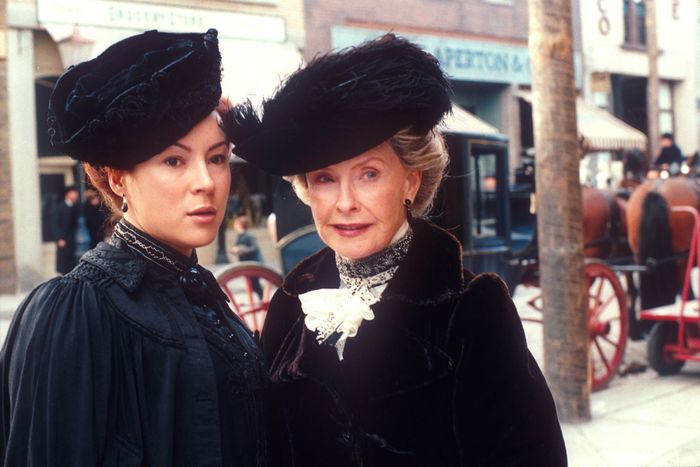
Photo: A&E/Everett Collection
Year: 1942
Director: Orson Welles
Run time: 1h 28m
Released one year following his poorly regarded and now-forgotten flop Citizen Kane, Orson Welles’s adaptation of Booth Tarkington’s 1918 novel The Magnificent Ambersons intertwines financial and moral decline at the rapidly darkening twilight of the era. Tim Holt plays petulant twat George Amberson, his family’s only son and heir who primarily enjoys being rich and monopolizing the attention of his widowed mother Isabel. When she deigns to reconsider the affections of Eugene Morgan, an old flame flush with new money thanks to automobile manufacturing, George wastes no time attempting to sabotage the relationship under the false pretense of protecting his mother from gossip. Predictably, Welles’s direction and cinematography is layered and beautiful; one particularly famous shot of Dolores Costello and Anne Baxter in profile is breathtaking. The pacing and editing, on the other hand, are noticeably awkward in the second half thanks to RKO Studios’ infamous chop job — Welles, not unjustifiably, died mad about it. Otherwise, it’s all here: cigars, balls, frills, mansions, financial ruin, and an offhand comment about how “the family always likes to have someone in Congress.” Stay for the incredible end credits.
The Heiress
Year: 1949
Director: William Wyler
Run time: 1h 55m
The “I won’t watch movies made before 1975” weirdos will hate William Wyler’s The Heiress, a stunning and brilliant romantic drama with a taut theatrical formality emblematic of its era (and technically set in the 1850s, but too thematically aligned not to include). Olivia de Havilland plays Catherine Sloper, the only child of a wealthy doctor who finds her a “mediocre and defenseless creature” wholly inferior to her deceased mother (and makes no secret of it). Enter Montgomery Clift as Morris Townsend, a charming but wildly unemployed suitor well aware of the fortune she’s poised to inherit. Dr. Sloper suspects Townsend immediately — after all, who could possibly be attracted to his ugly moron daughter?! — but Clift and de Havilland deftly play the courtship as a genuine mutual crush. When the pair arrange to elope and Dr. Sloper threatens her inheritance, the movie bends itself into a remarkable character study so convincing it netted de Havilland her second Oscar. (Costume designer Edith Head and composer Aaron Copland also won for their work on the film, in case the talent behind this production was unclear.) As a self-contained drawing-room tragedy, it’s delicately felt in places, but Wyler wastes no space conveying his merciless view of human selfishness and the twisted interplay of love and money. All of which, as it happens, are timeless.
Hello, Dolly!
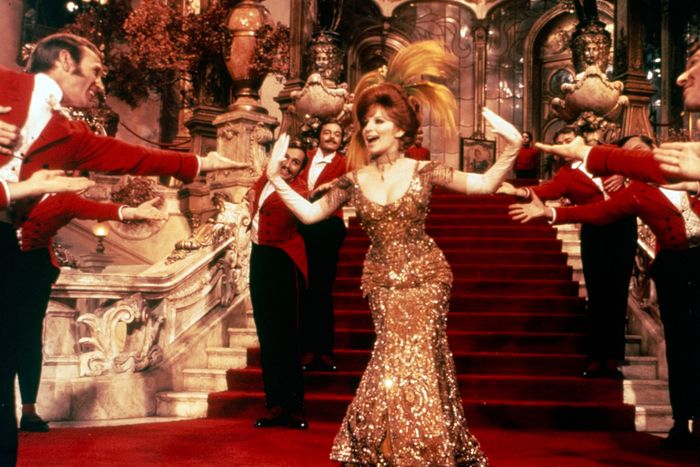
Photo: 20th Century Fox/Everett Collection
Year: 1969
Director: Gene Kelly
Run time: 2h 28m
Hello, Dolly! is the lightest movie on this list by a long shot, portraying 1890s New York as a whimsical dream city full of adventure and delightful parades. It’s also the only musical, and certainly the only G-rated diva vehicle for Barbra Streisand wearing one of cinema’s heaviest dresses. As is evident from the first verse of the opening number, Hello, Dolly! simply exists because Streisand does, meaning the Gilded Age setting is mostly window dressing. From the director’s chair, Gene Kelly doesn’t pretend otherwise, trailing her and a small army of dancers from production number to production number. The choreography is acrobatic, but the jokes rarely land, and as multiple critics pointed out at the time, it’s really not great. (“This may be the most superfluous film review ever written,” wrote Vincent Canby in a rather scathing takedown for the New York Times.) Whatever those cute sequences in Wall-E may have led you to believe, it’s a supremely messy two-and-a-half-hour extravaganza that cost 20th Century Fox an absolute fortune from which it barely recovered. That fact might be the most Gilded Age thing about it. And Babs’s proto–Kylie Jenner nails are probably the least.
Ragtime
Year: 1981
Director: Miloš Forman
Run time: 2h 35m
A master of subversive filmmaking draped in grand emotions and elaborately staged tableaux, the late Miloš Forman was uniquely suited to the overwhelming spectacle of E. L. Doctorow’s 1975 novel Ragtime and turn-of-the-century America. Set in 1906, Ragtime takes a panoramic view of a country in upheaval: flooded with new immigrants, flush with cash, accelerated by the invention of the automobile and motion pictures, captivated by loosening sexual mores, and simmering with racial tension. It splits its drama between Coalhouse Walker Jr., a talented Black piano player, and the affluent white family with whom he becomes increasingly entangled after a group of white firemen vandalize his car. Ragtime’s themes are undeniably lofty — justice versus vengeance, the cost of self-respect, and the friction between individual freedom and state power — and Forman executes them ambitiously with a pitch-perfect ensemble cast: Howard E. Rollins, James Cagney, Mandy Patinkin, Brad Dourif, Mary Steenburgen, and Elizabeth McGovern. In terms of style and scale, parts of it feel like a warm-up for his 1984 magnum opus Amadeus, but the film’s ruminations on American identity and aspirations at the dawn of an American century are all its own. Not bad for a Czech filmmaker.
The Bostonians
Year: 1984
Director: James Ivory
Run time: 2h 2m
How you already feel about period dramas is a good indication of how you’ll feel about The Bostonians, the second of three Henry James adaptations made by period-drama auteur James Ivory and producer Ismail Merchant. True to Merchant Ivory form, it’s a lavish near-melodrama, replete with pained yearning in diffused light and loaded conversations inside beautiful sitting rooms. The film’s animating ideological struggle doubles as a love triangle, pitting suffragette spinster Olive Chancellor against reactionary Confederate veteran Basil Ransom for the affections of Verena Tarrant, the youngest rising star of the fledgling feminist movement and Olive’s protégé-slash-benefactor. Granted, Verena is no mere puppet. She chafes against Olive’s overflowing neediness and insistent misandry (which Vanessa Redgrave expertly layers with tortured longing and sexuality); she deflates Basil’s oppositional bluster with a cutting “the interest you take in me isn’t a bit controversial, it’s just personal.” The Bostonians is not quite to sex relations what Ragtime is to race. Still, its meticulously constructed portrayal of the ravages of desire amidst burgeoning ideas of feminist separatism and women’s emancipation remains potent. Marketed as “an intimate and exquisite portrait of the feminist heart,” no movie better answers one of feminism’s most urgent questions: Would you date a Republican, particularly if that Republican was Christopher Reeve in his prime?
Click here to preview your posts with PRO themes ››
The Age of Innocence
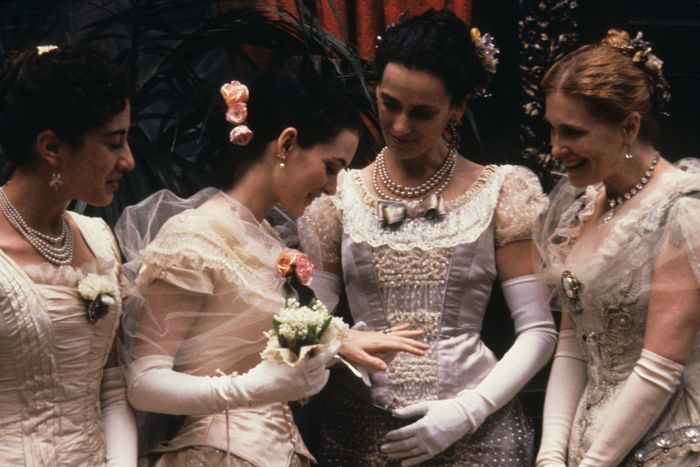
Photo: Columbia Pictures/Everett Collection
Year: 1993
Director: Martin Scorsese
Run time: 2h 19m
Outside of the AP English teacher demographic, The Age of Innocence easily ranks among Martin Scorsese’s most underappreciated films. Marty’s blood-free period drama is artful and full of art, braiding together the ultrarefined luxury of Edith Wharton’s “hieroglyphic world” with its savage, silent violence. No expense is spared nor pregnant silence wasted as the camera meanders among opera balconies and palatial drawing rooms, drifting over silver candelabras and silk gloves. Daniel Day-Lewis plays Newland Archer, an attorney engaged to ingenue de la saison May Welland (Winona Ryder) but enraptured by outspoken Countess Ellen Olenska (Michelle Pfeiffer). The rest of New York society, however, will not tolerate infidelity among their ranks, nor will they stoop to acknowledge the potential for such an indiscretion. From this dynamic unfurls a silently coordinated campaign of “exquisite violence” intended to thwart Archer and Olenska’s love but cloaked by artifice and plausible deniability. Manifesting in loaded insinuations veiled by unfailing manners, the campaign’s advance is channeled through charged symbols of castration, tribal judgment, and female fecundity and domination. Dealt with unnerving subtlety, the final blow is one of Scorsese’s most devastating character executions. It’s also a major reason why, nearly 30 years since its release, the film remains the definitive Wharton adaptation.
The Portrait of a Lady
Year: 1996
Director: Jane Campion
Run time: 2h 22m
The Jane Campion fever incited by The Power of the Dog has not brought with it renewed interest in The Portrait of a Lady, her well-intended if flawed adaptation of Henry James’s 1881 serialized novel. Whatever its faults, it’s nothing if not high Campion: a gorgeous period piece replete with her trademark gestural intimacy that follows an independent but increasingly tormented woman. Free-spirited Isabel Archer (Nicole Kidman) is an American heiress abroad when she encounters Gilbert Osmond (John Malkovich), a sophisticated and cunning suitor who bewitches her body and soul — at least until he puts a ring on it and she puts his name on the joint checking account. From there, the movie becomes a slog through their soul-suffocating marriage driven by Kidman’s tear ducts and Malkovich’s scorn, the latter reminiscent of — but less enticing than — his Valmont in 1988’s Dangerous Liaisons. To Campion’s credit, she expertly illustrates the European frustration that Americans and their money are a package deal, never mind these Yanks’ continued inability to properly assimilate. Or, to borrow a better phrase from Osmond’s fellow schemer Serena Merle: “Americans certainly make poor Europeans.” We really do, don’t we?
Washington Square
Year: 1997
Director: Agnieszka Holland
Run time: 1h 55m
As far as adaptations of Henry James’s novel go, 1997’s Washington Square is inferior to The Heiress. Director Agnieszka Holland’s version lacks the focus and sharpness of its predecessor, but it functions as something of a modern update to Catherine Sloper’s tale of woe. Jennifer Jason Leigh plays Catherine as hopelessly dowdy, bumbling, and awkward, even within the confines of her own drawing room. Ben Chaplin is believable as her lone suitor Morris Townsend, and Albert Finney’s take on Dr. Sloper’s abusiveness stings; Maggie Smith is on hand but underutilized as frivolous Aunt Lavinia. Regardless, Leigh carries it. Her excruciatingly measured rise through and beyond her father’s cruelty powers the film, and the self-possession she achieves comes at a higher cost than that of Olivia de Havilland’s Catherine. Holland and screenwriter Carol Doyle reward their Catherine with a slightly girlboss-ified finale (not great) punctuated by an intense close-up of Catherine wordlessly processing everything that’s happened (extremely great, because Leigh is). In a movie full of overwrought conversations and shoehorned interactions, perhaps that’s the lesson. In other words, when Washington Square shuts up and gets out of Leigh’s way, it shines.
The Wings of the Dove
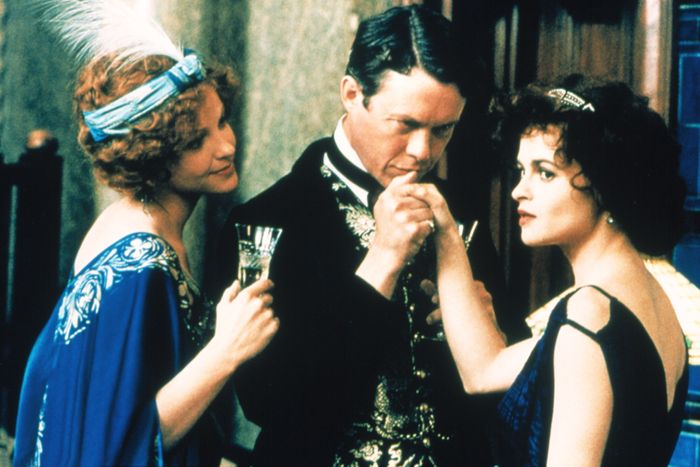
Photo: Miramax/Everett Collection
Year: 1997
Director: Iain Softley
Run time: 1h 42m
From Iain Softley, a.k.a. the guy who brought you Hackers and that Beatles movie, comes The Wings of the Dove, a well-executed and sensual romantic drama that ticks off plenty of boxes: American heiress abroad; scheming for love and/or money; suitable matches arranged in ballrooms by an aunt who decides “who fits best with who.” Kate (Helena Bonham Carter) is a rebellious London socialite doomed to no fortune should she marry for love. The lover in question, Merton (Linus Roache), is every inch a period-drama leading man: handsome, clever, charming but a little self-serious, and outside her income bracket. That stands to change with the introduction of Millie (Alison Elliott), a terminally ill American heiress who could perhaps be persuaded to bequeath it to a man she loves — say, Merton! To execute the plan, Kate and Merton accompany Millie on a lavish Venetian vacation, where Millie’s genuine kindness and their shared deception begins to rot their relationship from the inside out. Softley and cinematographer Eduardo Serra experiment with creative transitions and unconventional angles; together with its sumptuous Italian backdrop, it maintains a tonal lightness not common to movies with such unambiguous moral compasses. It holds up. Great rain kiss, too!
The House of Mirth
Year: 2000
Director: Terence Davies
Run time: 2h 20m
The mere existence of a Scorsese-helmed Wharton adaptation is perhaps why Terence Davies’s The House of Mirth is often overlooked (and thus difficult to find streaming anywhere). But Davies’s film has a patience and lightness of touch that Scorsese’s lacks, as well as a note-perfect lead in Gillian Anderson. Anderson, looking every inch a Pre-Raphaelite muse, plays the penniless, unmarried, and — worst of all — conspicuous socialite Lily Bart. That’s almost criminal in a social world of implication, subtext, and discretion, and one prepared to punish its own over the slightest whiff of vulgarity, real or imagined. Lily’s gambling debts and extended tenure on the marriage market make her an easy target for increasingly severe gossip and social ostracism, and Davies depicts her tragic expulsion from New York society in beautifully lit and perfectly arranged tableaux. The script feels worthy of its source material, never shying from Wharton’s elegant and often cutting wit, whether in the form of pithy observations about marriage — “A girl must, and a man if he chooses” — or instantly memorable quips, including, “This unwelcome information has completely ruined the Mozart for me!” Us, too, Aunt Julia!
Another Period
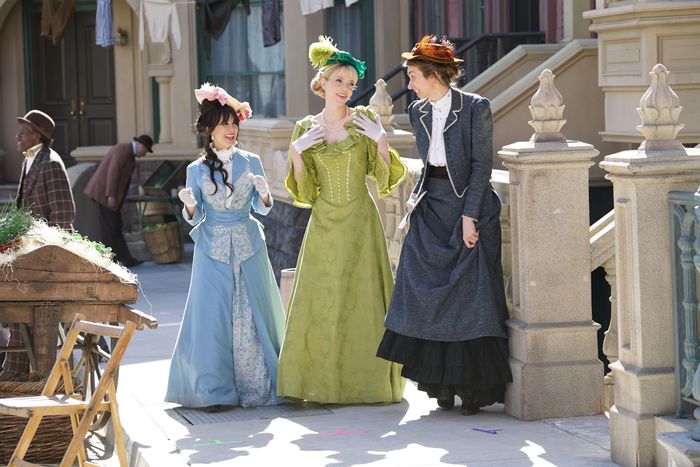
Photo: Comedy Central/Everett Collection
Years: 2015–18
Number of season: Three
Episode run time: 21m
Like all decent parodies, Another Period could only have been made by two devoted fans of its target. Written, produced, and starring Riki Lindhome and Natasha Leggero as two sisters jockeying haplessly for status within Newport society, Another Period sends up every costume-drama trope in the book. This includes devious prostitutes, stuffy butlers, divorce scandals, general servant abuse, morphine addictions, and children who appear twice a season to remind viewers that they exist but are otherwise the business of an off-screen nanny. (Of all its assorted inspirations, Downton Abbey’s upstairs-downstairs dynamic takes the biggest pounding.) Another Period established its commitment to total ludicrousness early and stuck to it, from the pilot in which the sisters brawl with Helen Keller and Anne Sullivan in their sitting room after drinking “cocaine wine” to the final season in which Harry Houdini hosts a hack séance to summon the family’s dead dog, Mayor Cutie. Many of Another Period’s best gags come out of its suffragette story line, led by old maid and eldest Bellacourt sister Hortense and her Newport Association of Gal Spinsters, or NAGS. It’s aged, but it’s still funny, often slapstick, and reminiscent of a bygone era of TV sitcoms and American politics. They just don’t make ’em like they used to, ladies.
The Alienist
Years: 2018–20
Number of seasons: two
Episode run time: 43m–55m
Somewhere between a Gilded Age–set season of True Detective and the closest American TV ever came to its own Babylon Berlin, The Alienist never quite got its due — not counting the five Emmys it invariably lost to The Crown and Game of Thrones and, possibly unfairly, The Assassination of Gianni Versace: American Crime Story. Virtually everything about the series works, and the production design and costuming is extraordinary. The same goes for the casting. Daniel Brühl, never disappointing, plays the neurotic Hungarian proto-serial-killer-psychologist Laszlo Kreizler, with Luke Evans as his Dr. Watson–style foil and Dakota Fanning as a steely-eyed secretary leaning in to the grisliest crime scenes of mid-1890s New York. The building blocks of the central child-murderer plot aren’t terribly original on their own, but The Alienist always makes its setting feel indispensable, braiding its police procedural seamlessly into the particulars of social class and police corruption at the turn of the 19th century. The more traditional period- piece elements — drawing-room courting rituals and disaffected brothel visits, for instance — tend to slow the pace. Your patience for those will likely determine your perception of the rest of the show.
The Buccaneers
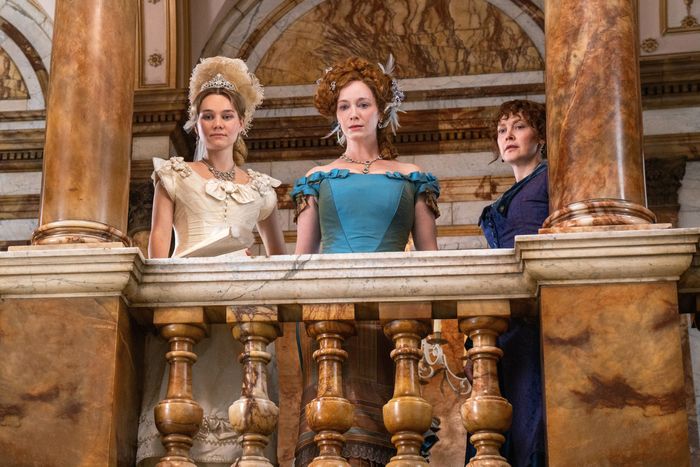
Photo: Apple TV/Everett Collection
Years: 2023–
Seasons: Two
Episode run time: 49m–55m
Perhaps we need not judge The Buccaneers by a prestige-TV metric, since it is very obviously a grasping attempt by Apple TV+ to slurp up Bridgerton’s bodice-ripping runoff. And yet we shall, because it gallingly claims to be an adaptation of Wharton’s unfinished 1938 novel of the same name. Like the book, the show is predicated on a classic Gilded Age bargain: American heiresses fill the dwindling coffers of the British peerage; correspondingly eligible dukes and lords bestow a noble title that papers over a nouveau-riche designation. The Buccaneers, however, tries to girly-pop-ify this deal and its setting in increasingly inscrutable and faux-feminist ways. Either this is a society that punishes the slightest indiscretion, or it’s one unfazed by an unmarried woman slugging Champagne in her underwear in view of a busy street on her wedding day. Gentle reader, it can’t be both. The social codes of bloodless brutality cloaked in plausible deniability aren’t window dressing. They are what makes the era narratively compelling, and also what makes The Buccaneers’s slapdash dialogue so uncanny. Then again, it’s nice to see Leighton Meester getting work again and a show completely unafraid to be mainly about hot people making out.


